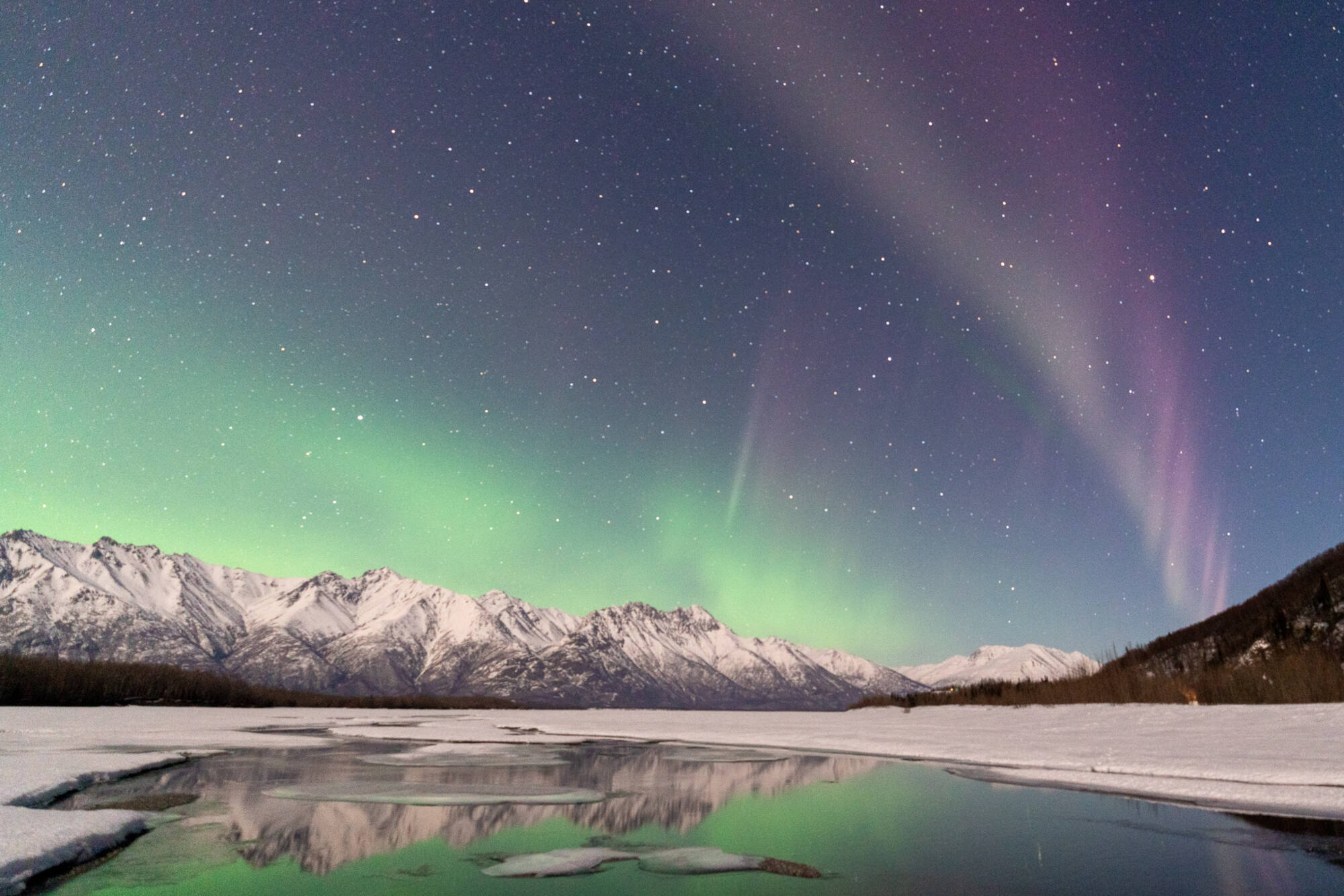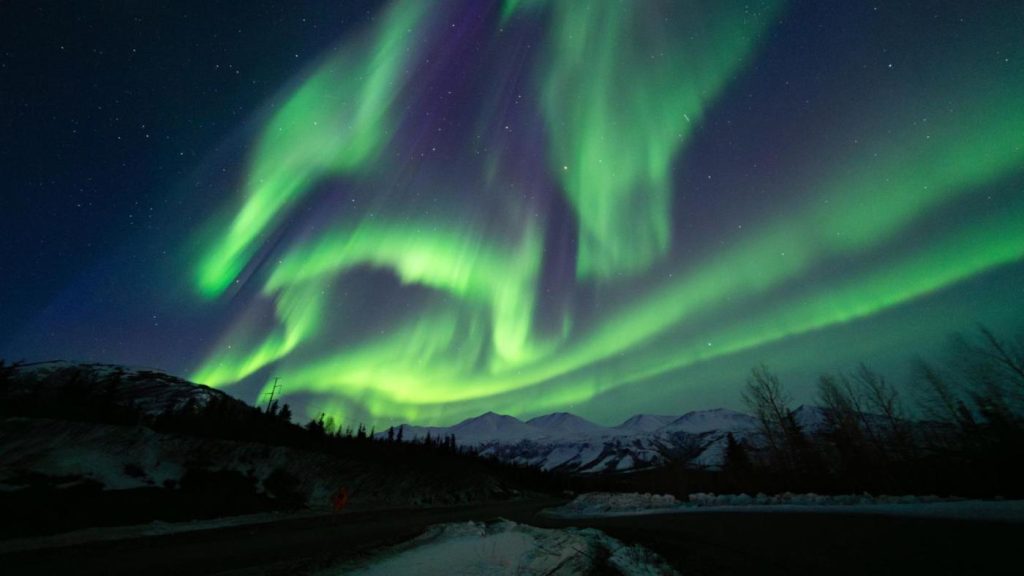Alaska is in for an extraordinary weekend as the sky comes alive with a stunning Northern Lights display, while the state experiences an unusual winter warm-up. This rare combination of celestial beauty and unexpected temperature shifts is making headlines, leaving residents both excited and cautious about what’s ahead.
Northern Lights Set to Put on a Spectacular Show
For those who love witnessing the magic of the Aurora Borealis, this weekend offers a prime opportunity. A minor G1 geomagnetic storm, triggered by a burst of solar wind from a coronal hole in the sun, is creating perfect conditions for a breathtaking Northern Lights display over much of Alaska.
The best viewing times will be between 10 PM and 2 AM, when the sky is darkest. To see the auroras at their most vibrant, it’s best to find a location far from city lights. Thankfully, clear skies are expected in many areas, which should provide optimal visibility.
Northern Lights enthusiasts and photographers are encouraged to prepare for temperatures that, while warmer than usual, will still be cold enough to require full winter gear. Those heading out for long viewing sessions should dress in layers, wear insulated boots, and bring hot drinks to stay warm.

Alaska’s Winter Warm-Up: What’s Causing the Temperature Spike?
While February is typically one of the coldest months of the year in Alaska, this weekend will be unusually mild. According to the National Weather Service (NWS), temperatures are expected to rise well above seasonal norms, marking a noticeable departure from the state’s usual deep freeze.
Here’s how the temperatures are shaping up across key areas:
- Anchorage – Highs will reach around 38°F (3°C) by Monday, making it feel much more like early spring than mid-winter.
- Fairbanks – Residents will experience a gradual warm-up, with highs near 25°F (-4°C) by Wednesday—a significant change from the usual subzero conditions.
- Juneau – The southeast portion of the state will see highs climbing to 40°F (4°C) by Tuesday, with potential rain and drizzle midweek.
This warming trend is notable because February temperatures in Alaska typically range from 15°F to 24°F (-9°C to -4°C). The shift is due to a shift in weather patterns that are allowing milder air from the Pacific to push into the state, disrupting the usual Arctic chill.
Safety Concerns: What Alaskans Need to Watch Out For
While warmer temperatures might sound like a welcome break from the bitter cold, they also bring new hazards that residents need to prepare for.
- Slippery Conditions – As snow and ice begin to melt, roads and sidewalks could become dangerously slick. Black ice is a serious concern, especially in the mornings and evenings when temperatures still drop below freezing.
- Flooding Risk – The sudden thaw could lead to localized flooding, particularly in areas prone to ice damming and poor drainage. Residents in low-lying regions should monitor water levels closely.
- Avalanche Danger – Warmer weather combined with recent heavy snowfall could increase avalanche risk in mountainous areas. Those venturing into the backcountry should check forecasts and exercise extreme caution.
Final Thoughts: An Unforgettable Weekend for Alaska
This weekend’s weather is shaping up to be a rare and fascinating mix of natural wonders and unexpected changes. While the Northern Lights will provide a breathtaking display, the warmer temperatures will bring both comfort and potential hazards. Alaskans are advised to take advantage of the incredible aurora views, but also to stay cautious of the changing weather conditions. Whether you’re braving the cold for a glimpse of the auroras or adjusting to the thawing snow and ice, this weekend is sure to be one to remember.

